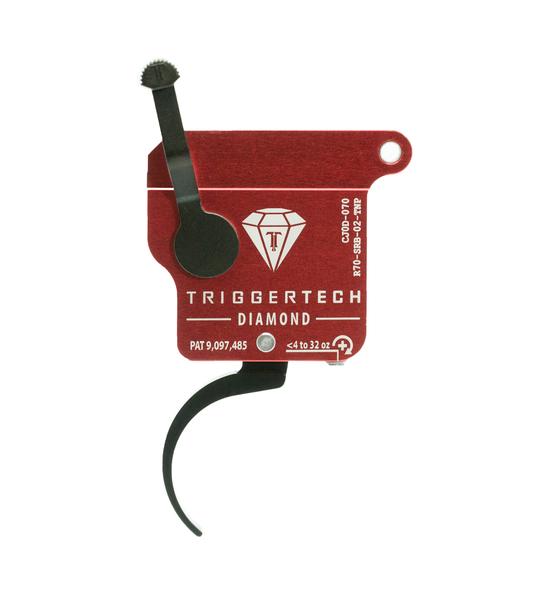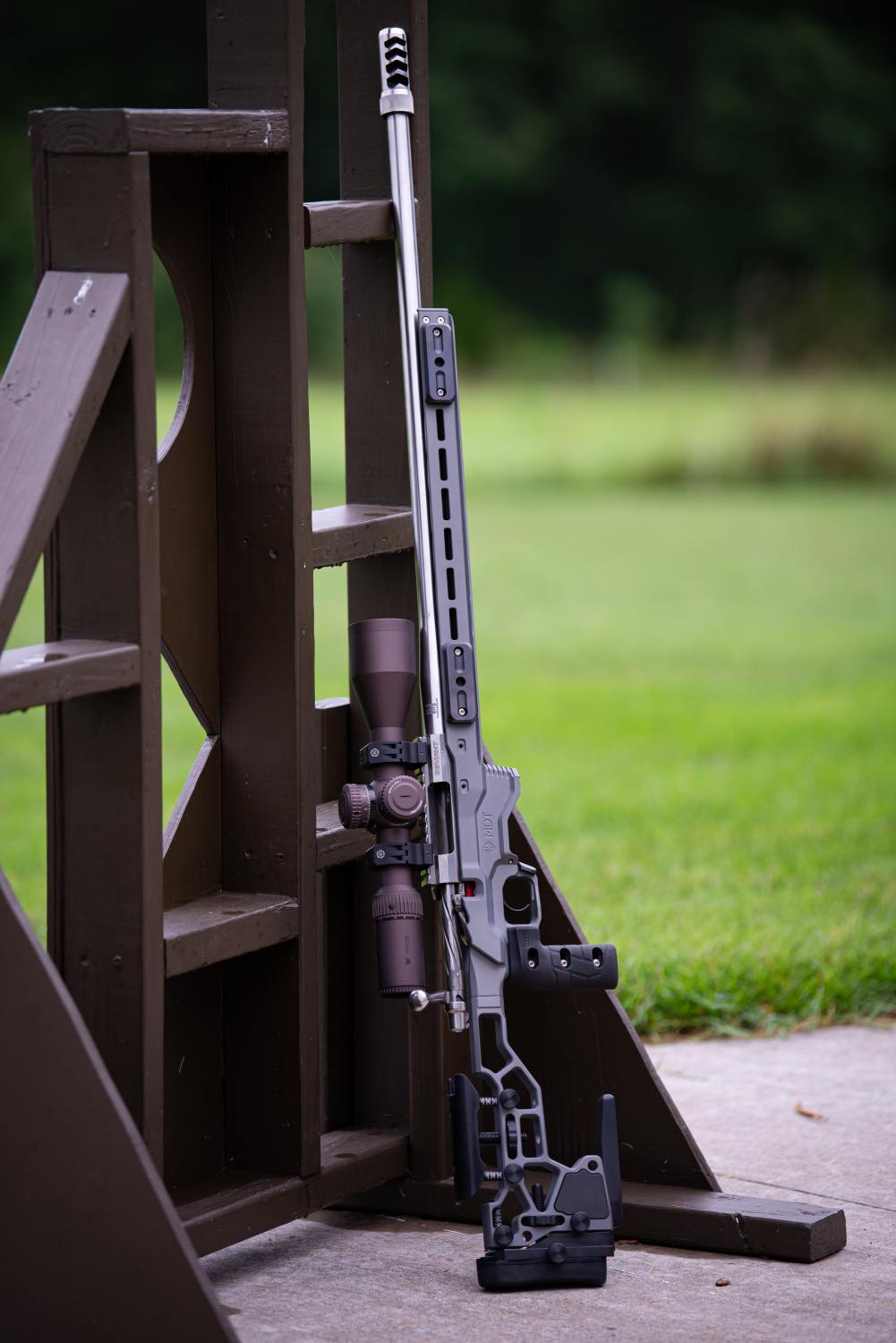How To Shoot Long Range – The Guns
Alright folks, with the introduction to How To Shoot Long Range out of the way, let’s begin discussing the gear necessary to make impacts at far distances. I do want to make it clear at the outset that nicer equipment doesn’t necessarily mean you will hit your target at distance. The fundamentals of marksmanship are far more important, and we will get into that later in the series.

Photo credit – PRN
I also need to point out that I won’t be covering gas-guns until much later in the series and they will likely have their own post. AR-type rifles are generally not considered the long-range precision tool of choice for a number of key reasons. I’m sure many people will disagree with that, and I look forward to that discussion in the comments section.
In case you haven’t noticed, we’re all about the guns over here at TFB. So with that being said, I would like to cover three categories of bolt action rifles that the shooter could choose from with which to attempt long-distance shots. These are Budget, Production Class, and Full Custom.
Budget

Photo credit – PRN
A budget rifle is defined (by me) as any bolt action purchased over-the-counter for a price typically less than one thousand dollars. If you walked into Bass Pro Shops and picked up a Ruger American for $499.00, you have a budget rifle. Other rifles that typically fall into this category are the Thompson Center Compass, most Savages, Remington 700, Ruger Precision Rifle, Tikka T3X, and Bergara B14 just to name a few. If I just offended you, grow a thicker skin for starters and also, don’t be offended. There are some great choices in that list! I don’t mean it as an attack.
Remington 700’s have been around the long-range block more times than I care to count and many Ruger Precision Rifles have been used to win Precision Rifle Series competitions. If that’s what you can afford as you get started in this game, then, by all means, buy that Tikka T3X and be happy, as you made a great choice!
Budget rifles tend to have similar limitations across the board, whether you buy a Ruger American or a Remington 700. The quality control processes at the manufacturing level just aren’t consistent enough to turn out tack-driving rifles every time. Two friends could buy the same make and model of a rifle from the same store on the same day and one of those rifles will shoot great while the other one is trash. Consistency and repeatability is the name of the game in long-range shooting. If you are constantly second guessing your gear, what good is it really?
Another downside to the budget class of rifles is the trigger. In my opinion, the vast majority of these rifles have horrible triggers. What I mean is that they have over-travel, creep, and heavy pull weights. Many believe a low pull weight is the determining factor for a good trigger. I disagree. You can have a great four-pound trigger as long as it’s short and crisp. You can also have a horrible one pound trigger for obvious reasons. The majority of Precision Rifle Series competitors are running sub one pound triggers that have zero creep or over-travel. I personally like a crisp 1.5-pound trigger for all applications. Something adjustable from Trigger Tech or Timney as an example.

Photo credit – Trigger Tech
The last thing about a budget rifle that makes it less than desirable is the stock. The stocks on many of these guns have too much flex in them, they can’t be adjusted or fit to the shooter, and the barrels often contact the front of the stock. It’s extremely important to marksmanship fundamentals that the stock fits the shooter perfectly. If the length of pull is wrong, then positional shooting will become more challenging, and proper trigger press could be compromised. If the cheek weld isn’t the right height then you won’t be able to get a proper sight picture. The list goes on.
The barrel contacting the stock is a matter of harmonics. Think of the barrel like the string of a guitar. Guitar strings must be tuned correctly to play a given note. The barrel is similar. If your barrel touches the stock in any way, the harmonics could be “off” and your group sizes will suffer. The barrel is happiest when nothing touches it.
For all of these reasons and more, it is to your benefit to choose a rifle from one of the two remaining categories. Let’s talk about the production class.
Production Class

Photo credit – PRN
The Production Class, as defined by section 2.3.1 in the Precision Rifle Series rule book, says “Production Division combined rifle and optic MSRP as listed on the company’s website, shall not exceed $4000.00 USD. The rifle shall not exceed $2000.00 USD and the optic shall not exceed $2000.00 USD.”
For the purposes of this article, what I mean by production class is a rifle that costs somewhere in the $1000 to $2000 USD range. There are so many great choices in this category. A shooter could pick almost any one of these and not go wrong. Let’s look at some of the guns in this category.
The Bergara Premier Ridgeback. This is Bergara’s first real PRS competition rifle, and they have checked a lot of the most important boxes with this gun. It has a custom action, sub-MOA guarantee on the barrel, fully adjustable Grayboe stock, and a Trigger-Tech adjustable trigger comes standard. These are great features. The street price is approximately $1900.00 USD.

Photo credit – Bergara
Another great choice is the Sniper’s Hide Saber M700 ERT from Ashbury Precision Ordnance. Like the Bergara, there are so many great features packed into this rifle for the price. You get APO’s Saber chassis, which is fully adjustable, a trued Remington 700 action, sub-MOA accuracy guarantee and a Trigger-Tech trigger. This rifle can be had for just under $2000.00 USD depending on the configuration.
The last rifle I want to highlight is the Competition Ready Rifle by Masterpiece Arms. They sell this gun as a package with accessories, scope mount, and optic included for $3500.00 USD. However, the rifle alone costs less than $2000.00 USD. The MPA rifle comes with a custom Curtis action, MPA in-house barrel, the popular BA Hybrid Chassis and a Trigger-Tech trigger.
If you want to buy a rifle that simply performs without having to modify anything, or add any components, then you can’t go wrong with this list. They do have some limitations when compared to full custom rifles though. Let’s discuss the customs next and hopefully, the difference will be clear.
Full Custom

Photo credit – PRN
A full custom rifle, as defined by me, is a gun that has been hand-made using only the finest components and gunsmithing procedures. The shooter generally chooses an action available from companies like Defiance or Curtis, who do nothing but make custom actions. The stock or chassis is chosen from among the top companies in the industry. Companies such as Manners Composite Stocks, Modular Driven Technologies, McMillan Stocks, or Masterpiece Arms. Barrels are available from companies that do nothing but make great barrels. Companies like, Bartlein, Hawk Hill, Proof, and Muller Works just to name a few. You get the idea, only the best companies and products are used. These rifles are available in common calibers that shoot great with factory ammunition, but it’s not uncommon for a full custom rifle to shoot a wildcat cartridge that isn’t available in stores and must be hand-loaded.
The difference between a full custom and a production class gun comes down to quality control procedures and tolerances. With a rifle in this category, if your groups aren’t better than 1/2 inch at 100 yards, it’s your fault. Plain and simple, the gear isn’t the problem if this rifle won’t shoot. It’s difficult to put a price on these rifles simply because there are so many different configurations available. I have never seen a custom rifle cost any less than $3000.00 USD, and they typically run from $4000.00 to $7000.00 USD.
The vast majority of PRS competitors choose to run full custom bolt action rifles. I think the bottom line here is that, as a competitor, you want to take the gear out of the equation. If you finish poorly in a match, you want to know for certain that the gun wasn’t the problem.
Final Thoughts
Before we finish up this installment of TFB’s How To Shoot Long Range, I wanted to cover a couple of things. The first is that I am not a sniper. I shoot long range competitions mainly. A sniper might choose a completely different weapon system from the ones we’re discussing today. Common in the international sniper community is anything from Accuracy International for example. I bring this up because I will not be covering sniper roles in any way in these articles, and you will most likely notice my bias towards competition and hunting over and above sniping.
Finally, what I think you need to understand is that the fundamentals of marksmanship are one of the main things we will be discussing here. It doesn’t matter who you are or what you do for a job behind a gun, if you understand these fundamentals, you will be able to shoot long range. That’s the goal here and that’s my burden to fulfill. Until next time, stay zeroed.
We are committed to finding, researching, and recommending the best products. We earn commissions from purchases you make using the retail links in our product reviews. Learn more about how this works.
 Your Privacy Choices
Your Privacy Choices
